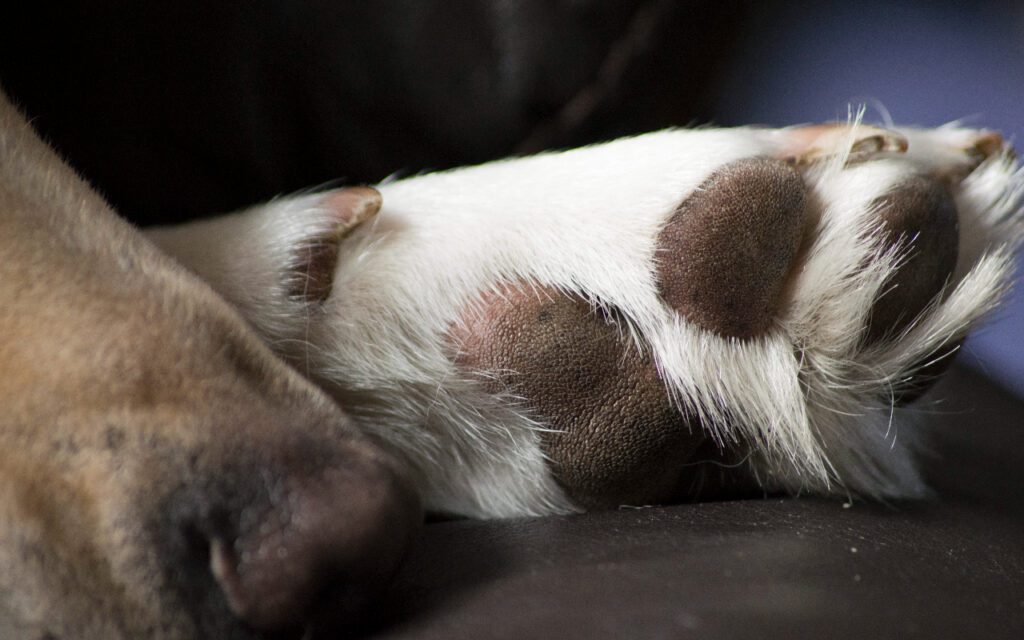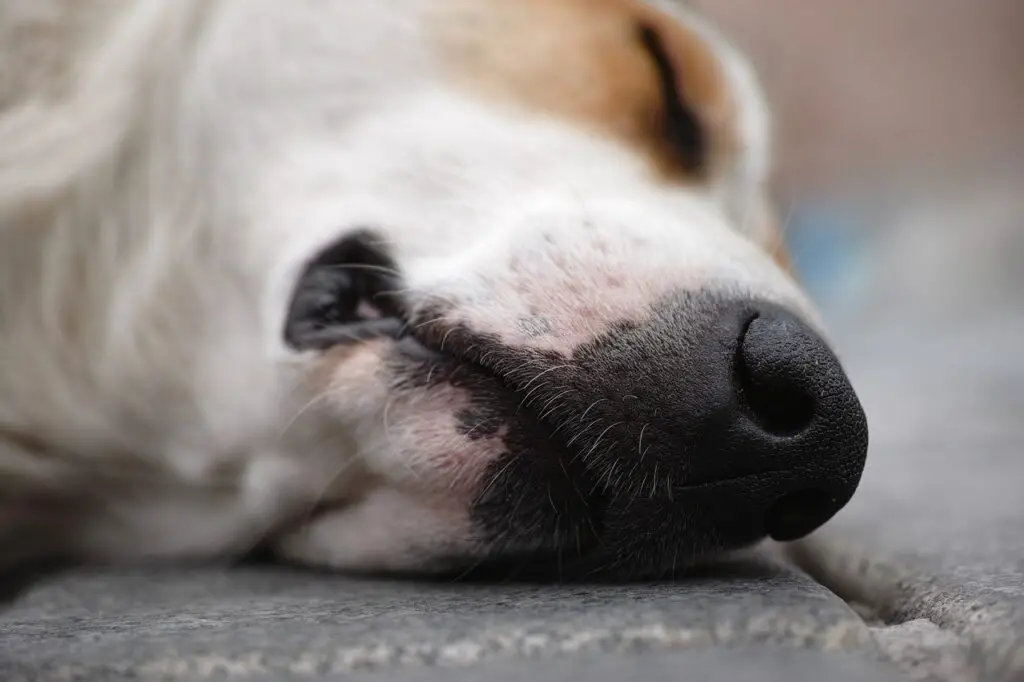“Can a dog with parvo survive? This devastating and highly contagious virus has pet owners worried about their beloved furry friends.
In this article, we’ll explore the reality of parvo, its symptoms, treatment options, and the chances of survival for dogs diagnosed with this disease.
As a responsible pet owner, it’s essential to be informed and prepared to give your canine companion the best chance at overcoming parvo.”
- What Is Parvo in Dogs?
- Can a Dog With Parvo Survive?
- How Is Parvo Treated In Dogs
- How Many Days Does Parvo Last?
- Can a Dog Survive Parvo On Its Own?
- What Are The Chances Of a Dog Surviving Parvo At Home?
- How Do You Know If a Dog Will Survive Parvo?
- Is It Okay To Touch a Dog With Parvo?
- Is Parvo Painful For Dogs?
- What Are The Worst Days Of Parvo?
- In Conclusion
Key Takeaway
- Parvo in dogs is a highly contagious viral disease that affects the gastrointestinal system and can be potentially life-threatening if not treated promptly.
- А dog with parvo can survive, with the survival rate ranging from 68% to 92% if treated by a veterinarian.
- Parvo in dogs is treated through supportive care, including intravenous fluids for hydration, electrolyte correction, and managing symptoms such as vomiting and diarrhea.
What Is Parvo in Dogs?

Parvo in dogs is a highly contagious viral disease caused by the canine parvovirus (CPV). It is most commonly seen in puppies and unvaccinated dogs but can affect all dogs.
Symptoms of parvo include severe vomiting and diarrhea, lethargy, anorexia, fever, and dehydration. In severe cases, it can lead to death if not treated quickly.
Vaccination is the best way to protect your dog from this virus.
Can a Dog With Parvo Survive?

Yes, a dog with parvo can survive with the right treatment and care. Early detection of symptoms and prompt veterinary intervention are essential for increasing the chances of recovery.
While parvo is a severe and highly contagious disease, many dogs have successfully overcome the virus thanks to proper medical attention, supportive care, and the diligent efforts of their owners.
It is crucial for pet owners to be aware of the risks and take preventive measures to protect their furry friends from this life-threatening illness.
How Is Parvo Treated In Dogs
Here is how parvo is treated in dogs:
Initial Diagnosis
Before starting treatment, a veterinarian will diagnose parvo by assessing the dog’s symptoms, and medical history, and conducting laboratory tests such as fecal ELISA or PCR tests.
Hospitalization and Isolation
Dogs diagnosed with parvo usually require hospitalization and isolation to prevent the spread of the virus and to receive intensive care.
Fluid Therapy
Dehydration is a significant concern in dogs with parvo. Intravenous (IV) fluid therapy is administered to replace lost fluids, maintain electrolyte balance, and support kidney function.
Nutritional Support
Providing nutritional support through a balanced diet is vital for the dog’s recovery. Initially, the dog will get on small and frequent meals of easily digestible food. As the dog’s condition improves, their regular diet can be gradually reintroduced.
Antibiotics
The vet will prescribe antibiotics to combat secondary bacterial infections that may occur due to a weakened immune system.
Antiemetics
Antiemetic medications help control vomiting and nausea, allowing the dog to retain nutrients and fluids more effectively.
Pain Relief
If a dog experiences pain or discomfort due to parvo, veterinarians may prescribe pain relief medications to alleviate symptoms and improve the dog’s quality of life during recovery.
Probiotics
Probiotics can be beneficial in restoring healthy gut bacteria and supporting the dog’s gastrointestinal health after a parvo infection.
Monitoring and Follow-up
Throughout the treatment process, veterinarians will closely monitor the dog’s condition, adjusting the treatment plan as needed. After discharge, the vet will schedule a follow-up appointment to ensure the dog’s full recovery and to discuss vaccination schedules or other preventive measures.
How Many Days Does Parvo Last?
Generally, the acute phase of parvo lasts for 5 to 7 days, with the most critical period being days 3 to 5.
During this time, affected dogs may experience severe symptoms like vomiting, diarrhea, dehydration, and lethargy.
Prompt veterinary intervention and supportive care are crucial to help a dog through this challenging period.
After the acute phase, recovery can take anywhere from a few days to several weeks, depending on the dog’s overall health and how well they respond to treatment.
It is important to remember that even after recovery, dogs can still shed the virus for several weeks, posing a risk of transmission to other dogs.
Can a Dog Survive Parvo On Its Own?
It is highly unlikely for a dog to survive parvo on its own without veterinary intervention and supportive care.
Parvo is a severe, life-threatening illness that causes rapid deterioration in a dog’s health, leading to dehydration, electrolyte imbalances, and weakened immunity.
Without prompt and appropriate treatment, the dog’s condition can quickly worsen, and the chances of survival become minimal.
Therefore, it is crucial for pet owners to seek immediate veterinary care if they suspect their dog has contracted parvo, as early intervention significantly improves the likelihood of recovery.
What Are The Chances Of a Dog Surviving Parvo At Home?
The chances of a dog surviving Parvo at home are significantly lower than if they are treated in a hospital.
According to the American Veterinary Medical Association, the survival rate for dogs treated in a hospital is 90%, while the survival rate for at-home care is only 50%.
It is important to seek veterinary treatment as soon as possible if you suspect your dog has Parvo, as this will greatly increase their chances of survival.
How Do You Know If a Dog Will Survive Parvo?
It is difficult to predict with certainty if a dog will survive parvo, as each case is unique and depends on factors such as the dog’s age, health, and the severity of the infection.
However, early detection of symptoms and prompt veterinary intervention significantly improve the chances of recovery.
Dogs that respond well to treatment, show signs of improvement after the critical period (typically days 3 to 5), and regain their appetite are more likely to survive parvo.
Continuous monitoring by a veterinarian and supportive care, including fluid therapy and medications to manage symptoms, play a vital role in the dog’s recovery process.
Is It Okay To Touch a Dog With Parvo?
While it is okay to touch a dog with parvo, it is crucial to exercise caution and maintain strict hygiene practices to prevent the spread of the highly contagious virus.
If you need to handle a dog with parvo, you should wear disposable gloves and wash your hands thoroughly with soap and water before and after touching the dog.
It’s also essential to clean and disinfect any surfaces or objects the dog has come into contact with, as the virus can survive for long periods in the environment.
Avoid letting other dogs or pets come into contact with the infected dog or contaminated items to minimize the risk of transmission.
Is Parvo Painful For Dogs?
Yes, parvo is painful for dogs. The virus primarily targets the gastrointestinal tract, causing severe inflammation and damage to the lining of the intestines.
This leads to symptoms such as vomiting, diarrhea (often with blood), and abdominal pain.
Affected dogs may also experience lethargy, loss of appetite, and dehydration, which can further contribute to their discomfort.
The pain and distress caused by parvo make it crucial for pet owners to seek immediate veterinary care if they suspect their dog has contracted the virus.
Timely intervention and supportive care can not only alleviate the dog’s pain but also improve their chances of recovery.
What Are The Worst Days Of Parvo?
The worst days of parvo typically occur between days 3 and 5 after the onset of symptoms.
During this period, dogs may experience severe vomiting, diarrhea (often with blood), dehydration, lethargy, and loss of appetite.
The virus aggressively attacks the gastrointestinal tract, leading to a weakened immune system and making the dog more susceptible to secondary infections.
It is crucial for pet owners to seek immediate veterinary care when they notice the initial signs of parvo, as prompt treatment can significantly improve the chances of recovery.
Supportive care during these critical days, including fluid therapy and medications to manage symptoms, is essential for helping the dog overcome the illness.
FAQs
Q: What is parvo?
A: Parvo, short for canine parvovirus, is a highly contagious viral disease that affects dogs, especially puppies and unvaccinated dogs.
Q: How is parvo transmitted?
A: Parvo is transmitted through direct contact with infected feces or contaminated environments, such as dog parks, kennels, or shared water bowls.
Q: What are the symptoms of parvo?
A: The symptoms of parvo include severe diarrhea, vomiting, loss of appetite, lethargy, and dehydration.
Q: How is parvo diagnosed?
A: Parvo can be diagnosed through an ELISA test, which detects the presence of parvovirus in a dog’s feces.
Q: How long does it take for parvo to show symptoms?
A: It usually takes around 3 to 7 days for a dog to show symptoms after being exposed to parvovirus.
Q: How is parvo treated?
A: Treatment for parvo often involves supportive care, including intravenous fluids, medications to control vomiting and diarrhea, antibiotics to prevent secondary infections, and nutritional support.
Q: Can parvo be prevented?
A: Yes, parvo can be prevented through vaccination. It is important to ensure that puppies receive their initial series of vaccinations and receive booster shots as recommended by a veterinarian.
Q: Is parvo contagious to other animals or humans?
A: Parvo is highly contagious to other dogs, but it does not infect humans or other animals.
Q: Can a dog get parvo more than once?
A: Once a dog recovers from parvo, they typically develop immunity to the virus and are less likely to get infected again.
In Conclusion
In conclusion, a dog with parvo can indeed survive if timely and appropriate treatment is provided.
Knowledge about parvo, its symptoms, and prevention measures are crucial for pet owners to protect their dogs from this dangerous virus.
By staying vigilant, seeking prompt veterinary care, and following preventive measures, you can play a vital role in helping your canine companion overcome parvo and enjoy a healthy, happy life.





Leave a Reply